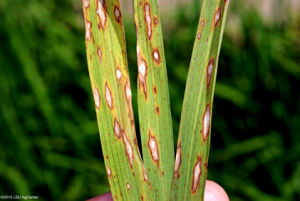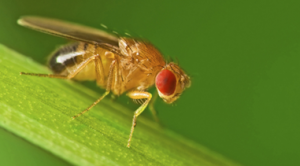Rice Blast is the most devastating disease causing major yield losses in every year worldwide. It had been proved that using resistant rice varieties would be the most effective way to control this disease. Molecular screening and genetic diversities of major rice blast resistance genes were determined in 192 rice germplasm accessions using simple sequence repeat (SSR) markers. The genetic frequencies of the 10 major rice blast resistance genes varied from 19.79% to 54.69%.
The south of Colombia is a center of diversity for diploid potatoes in the Solanum tuberosum group Phureja. This germplasm is important for genetic studies and is used as a genetic resource in potato breeding programs. In Andean countries, Phureja group potatoes are a staple food and represent important incomes for smallholder farmers.
Plant cells are incapable of sliding past each other, so generation of shape and structure in plant tissue is dependent on cells dividing and expanding in particular directions. Therefore, understanding how cells choose where to build new walls is critical in understanding how plant tissue is patterned. In the present study we expand on previous models of cell division to further understand what parameters of cell geometry and growth influence the position of new walls.
We present a bionic material made of plant cells and carbon nanotubes (CNTs) that exhibits record high temperature sensitivity. This material outperforms by ∼2 orders of magnitude the best man-made materials. The basic mechanism governing this response is the ionic conductivity in the egg-box structure of the pectin backbone, which interconnects cellulose microfibrils in the plant cell wall. The use of CNTs allows the bioelectrical property found in living plants to persist after cell death and stabilizes the response of the dried cells at high temperatures.
One hundred years after its first successful synthesis in the bulk form in 1914, black phosphorus (black P) was recently rediscovered from the perspective of a 2D layered material, attracting tremendous interest from condensed matter physicists, chemists, semiconductor device engineers, and material scientists. Similar to graphite and transition metal dichalcogenides (TMDs)
Agriculture represents the largest water-consuming sector in China, while industry and cities are growing competitors. To sustain a rapidly increasing population with richer diets, high levels of food production have come at significant environmental costs, such as groundwater overdraft and soil degradation. As socioeconomic growth and the associated pressure on water resources continue to increase, it is crucial to evaluate the effects of water-saving measures on agriculture, food trade, and water resources.
Large offspring syndrome (LOS) is a fetal overgrowth condition that mimics the human syndrome Beckwith–Wiedemann. These conditions have been observed with higher incidence in offspring conceived with the use of assisted reproductive technologies and are believed to be the result of misregulation of a set of genes that are expressed only from the maternally or paternally inherited chromosomes. These genes are known as imprinted genes. In our study, we demonstrate that the kidney, brain, muscle, and liver of LOS fetuses show misregulation of multiple imprinted genes when compared with controls.
Mitigating thermal stress through evolutionary adaptation or physiological plasticity is critical for species’ persistence in changing climates. Sparse knowledge of genetic and physiological architectures of thermal plasticity hampers our ability to predict organismal resilience to climate change. Understanding the independence of short- and long-term plasticity and constraints of basal thermotolerance on plasticity is important for understanding responses to climate change.
Capsaicinoids, including capsaicin and its analogs, are responsible for the pungency of pepper (Capsicum species) fruits. Even though capsaicin is familiar and used daily by humans, the genes involved in the capsaicin biosynthesis pathway have not been well characterized. The putative aminotransferase (pAMT) and Pungent gene 1 (Pun1) proteins are believed to catalyze the second to last and the last steps in the pathway, respectively, making the Pun1 protein the putative capsaicin synthase.
Hundreds of wild-derived Drosophila melanogaster genomes have been published, but rigorous comparisons across data sets are precluded by differences in alignment methodology. The most common approach to reference-based genome assembly is a single round of alignment followed by quality filtering and variant detection. We evaluated variations and extensions of this approach and settled on an assembly strategy that utilizes two alignment programs and incorporates both substitutions and short indels to construct an updated reference for a second round of mapping prior to final variant detection.


 Curently online :
Curently online :
 Total visitors :
Total visitors :









